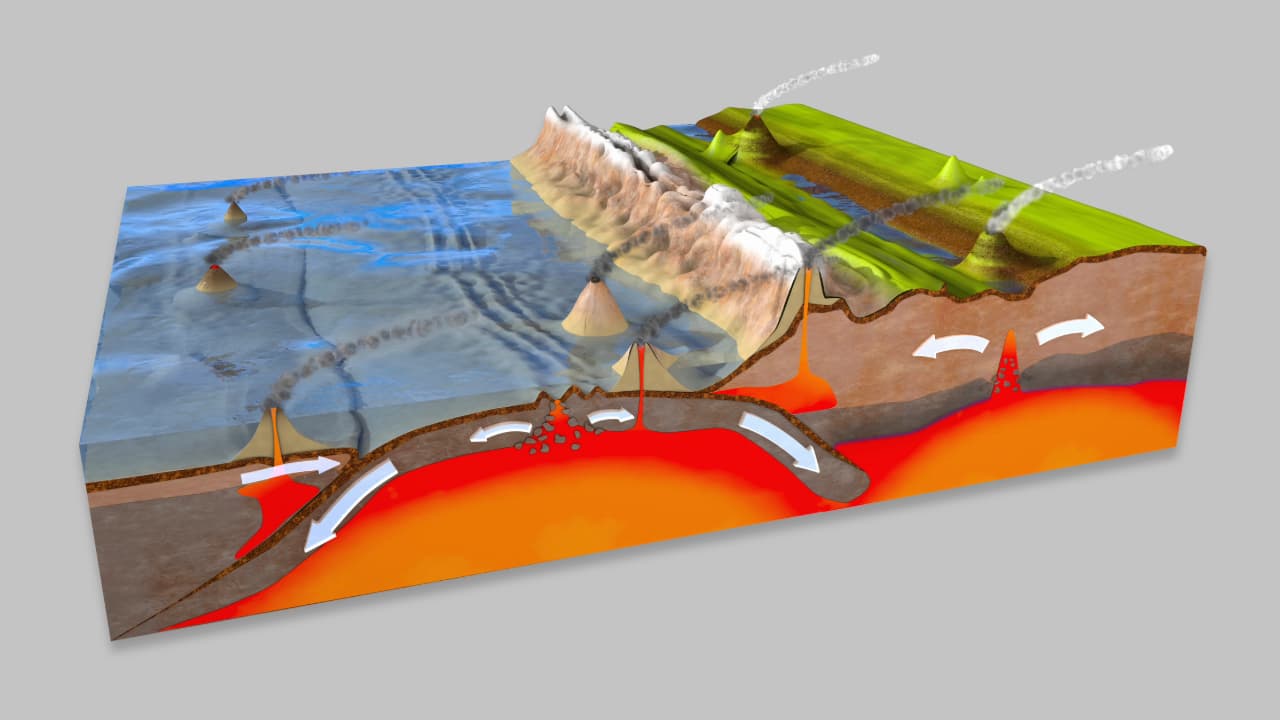A new study reveals how continents are slowly peeling away, fuelling underwater volcanoes. Discover the “mantle wave” mechanism changing our view of Earth.
Earth is gradually losing parts of its continents, and this process is contributing to the activity of underwater volcanoes. Scientists have identified a slow and unexpected mechanism deep within the Earth that helps to power volcanic eruptions under the oceans.
A team of researchers from the University of Southampton has found that small pieces of continents are being slowly removed from beneath the ocean floor and pulled into the mantle, which is a layer of hot, flowing rock deep underground. These fragments, once inside the mantle, can help drive volcanic activity in the oceans for millions of years.
This discovery helps explain a long-standing question: why do some ocean islands, located far from the edges of tectonic plates, show chemical signatures that resemble those of continental rocks, even though they are in the middle of the sea?
The study, published in the journal Nature Geoscience, involved researchers from the University of Southampton, the GFZ Helmholtz Centre for Geosciences in Potsdam, the University of Potsdam, Queen’s University in Canada, and Swansea University.
Ancient Clues Hidden in the Mantle
Certain ocean islands, like Christmas Island in the Indian Ocean, contain higher levels of elements commonly found in continental rocks. For years, scientists have been trying to understand how these “enriched” materials ended up so far from land.
It’s as if the Earth’s interior is like a cake batter, with old ingredients from deep inside being folded back into the mix. Until recently, most geologists believed these materials were brought into the mantle when ocean sediments were pulled down as tectonic plates sank, or when hot columns of rock, known as mantle plumes, rose from deep within the Earth. However, these explanations didn’t fit all cases. Some volcanic areas showed no signs of recycled ocean crust, and others were not hot or deep enough to be powered by mantle plumes.
Continents are Peeling from Below
The new research offers an interesting answer: continents aren’t just breaking apart at the surface; they are also slowly peeling away from below.
To test this idea, the team ran advanced computer simulations showing how the mantle and continental crust behave when tectonic forces pull them apart. The models revealed that when continents begin to split, huge stresses deep underground create what the researchers describe as a “mantle wave,” a slow, rolling motion that travels 150 to 200 kilometres beneath the surface. This wave gently scrapes material from the underside of the continents, detaching it gradually.
The process is extremely slow, about a millionth the speed of a snail. Yet over millions of years, it can move fragments of continental rock more than a thousand kilometres into the oceanic mantle. These fragments then provide fuel for volcanic eruptions that can last for tens of millions of years.
Evidence from the Indian Ocean
To test their theory, the team examined chemical and geological evidence from the Indian Ocean Seamount Province, a chain of volcanic mountains that formed after the ancient supercontinent Gondwana split apart over 100 million years ago.
Their analysis showed that soon after Gondwana split, a burst of magma rich in continental material erupted onto the ocean floor. Over time, this distinctive chemical signal faded, which matched the researchers’ prediction that the supply of continental material would eventually slow down.
Importantly, this happened without the involvement of a deep mantle plume, challenging the long-held idea that plumes are the main cause of such volcanism.
This research builds on earlier work by the same team, which showed that slow, rolling movements in the mantle can also influence processes deep inside continents, helping to trigger diamond eruptions or reshape landscapes thousands of kilometres from tectonic plate boundaries.
Together, these studies present a new view of the Earth as a restless, constantly moving planet, one where continents not only drift and collide at the surface but also shed their deep roots into the hot, flowing mantle below. It serves as a reminder that the planet’s surface is only part of a much deeper, dynamic system, one that continues to shape the Earth, quietly and patiently, over millions of years.
